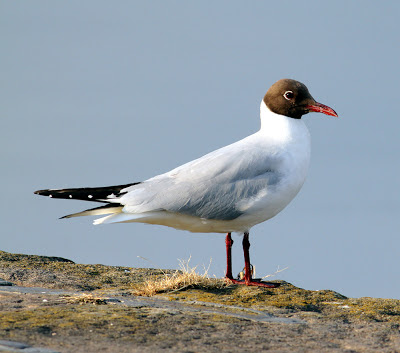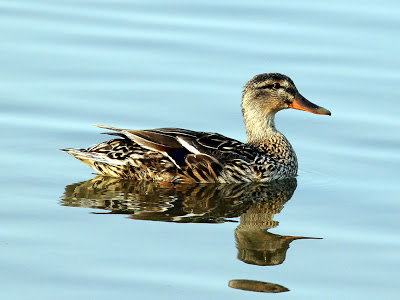The run of sunny mornings at the moment is just great for making hay by going out birding often.
On my way through Pilling this morning I stopped to watch a Barn Owl ghosting through the mist and to take a picture of the sunrise. A Quail was calling somewhere in the distance, but no chance of seeing the small and elusive creature, a bird which is more easily heard than seen. The song which is heard mainly at dawn and dusk, is unmistakable and is said to most easily remembered by the phrase "wet my lips". Click on the xeno-canto button to hear the dawn chorus.
Pilling Sunrise
At Conder Green I was in time to see the local Barn Owl scattering a number of hirundines as it headed for its daytime roost and out of sight. The owl was unlikely to emerge again as the early vehicles and people were beginning to appear, so I settled in to look about the pool and creek.
A good count of Swifts and hirundines hawking the early batch of insects – 40 Swift, 15 Swallow, 6 Sand Martin and 15 House Martin. Others – 2 Reed Bunting, 2 Sedge Warbler, 3 Pied Wagtail, 4 Linnet, 8 Goldfinch, 7 Greenfinch.
Good numbers of Redshank today with 75+, my how their numbers vary according to overnight arrivals and departures. 60+ Lapwing, 8 Common Sandpipers today plus an about-time Green Sandpiper and a very vocal Little Ringed Plover.
Common Sandpiper
Common Sandpiper
Little Ringed Plover
The Oystercatchers have split the young now, one chick with the male, the other with the female, a strategy employed to maximise the number of chicks making it to flying stage.
Oystercatcher chick
Wigeon increased today to 7 individuals, only 4 Tufted Duck but the addition of a distant juvenile Goosander. Other tufties seem to have moved on the more regularly frequented Glasson Basin where I later counted 8 Tufted Duck and 12 Coot.
Goosander
I found a Grey Heron hiding away in the usual quiet spot at Glasson – out of sight out of mind and where it can hunt the shallows without fear of being disturbed.
Grey Heron
More later from Another Bird Blog. Log in soon and in the meantime remember to click my pics.
This post is linking to Camera Critters and Anni's Blog.
This post is linking to Camera Critters and Anni's Blog.
















































































